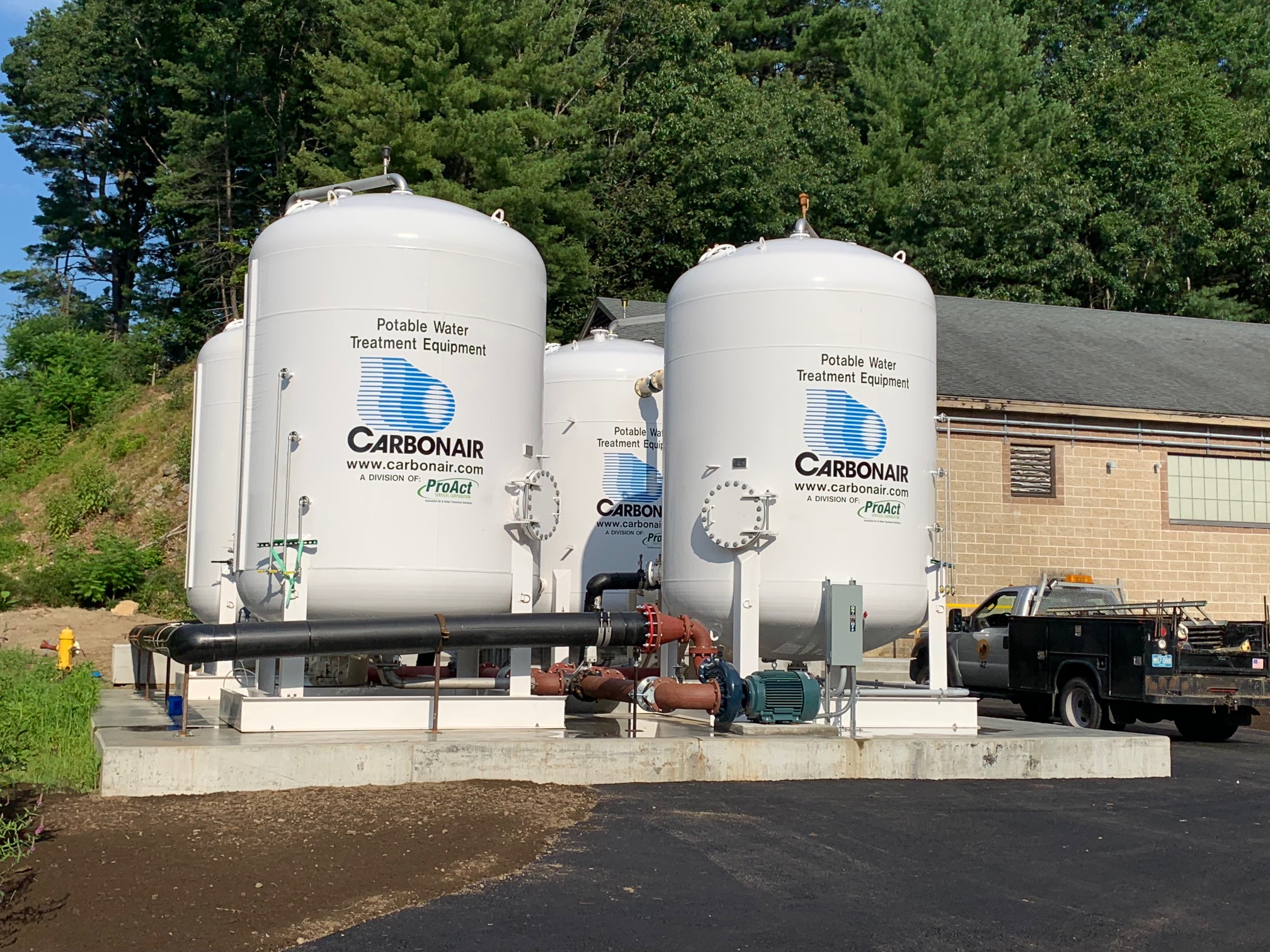When a community discovers per- and polyfluoroalkyl substances (PFAS) in its drinking water, swift action and the appropriate expertise go a long way in protecting public health. This year, a New England community called Woodard & Curran to action, entrusting us with aiding in selecting and implementing a best-fit PFAS removal treatment system that could be brought online in a matter of months.
In January 2019, the Town of Hudson, Massachusetts, made a startling discovery: high levels of perfluoroalkyls (PFAS) were detected in a sample from the town’s water supply. Led by the Department of Public works with full support of the Administration and Public Officials, the town leapt to action, coordinating with MassDEP and Woodard & Curran to identify the source of the contaminant, protect the community, and devise a plan to permanently remove PFAS from the water source.
Best-Fit Solution
It came down to the need for a new water treatment facility — a costly project that would take several years to complete. In the interim, Hudson needed a short-term treatment solution that could keep the drinking water supply safe and reliable for residents. Working with Woodard & Curran’s consulting team, the town opted for a temporary treatment system that could be designed and installed within months — not years.
The temporary PFAS treatment system needed to work seamlessly in conjunction with the existing water treatment system and could not interrupt any other operational aspects of the Town’s water system. It was designed and installed to avoid impacting the various supply well combinations and flows, effectiveness of the existing greensand iron and manganese removal plant, backwashing of the existing filters, distribution system pressures and storage tank water level fluctuations.
While granular activated carbon treatment for PFAS removal is a common option often with a lower initial cost, it requires more space and analysis indicated that long-term media replacement costs would be significantly more than with ion exchange. The workhorses of the Hudson emergency PFAS treatment system are four ion-exchange (IX) resin pressure vessels.

How it Works
Implementing this system required additional steps to integrate PFAS removal without disrupting other aspects of the treatment system. The system is installed following a previously existing greensand plant which removes iron and manganese from the combined flow of five individual wells. Water traveling through the treatment process is now dechlorinated with sodium bisulfite before flowing through the resin and rechlorinated with sodium hypochlorite after PFAS treatment. Utilizing potassium hydroxide, pH is adjusted after the resin vessels. Booster pumping, with variable frequency drive (VFD) control, compensates for the additional pressure loss through the PFAS system.
The process is continuously monitored and controlled by the SCADA system, with multiple analyzers providing real-time data to operations staff. Woodard & Curran performed SCADA system design and implementation to control the new chemical feed and treatment process equipment and to provide alarms and the required automatic shutdown in accordance with regulatory requirements.
Success on a Tight Schedule
To expedite the work, Woodard & Curran completed the design in stages, with longer lead time items occurring first, in what became a design-build delivery with Town staff and numerous construction contractors performing the work. We worked closely with MassDEP to ensure regulatory compliance, as well as DCAMM to obtain the necessary procurement waivers. From our first conceptual design through final installation, startup, testing, SCADA implementation and placing the system into service, the work was completed in less than three months.
